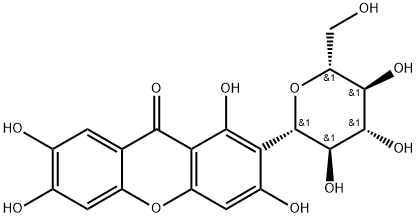A4847212
4-Hexylresorcinol , >98.0%(GC) , 136-77-6
Synonym(s):
1,3-Dihydroxy-4-hexylbenzene, 1,3-Dihydroxy-4-hexylbenzene;4-Hexyl-1,3-dihydroxybenzene;4-Hexylresorcinol;Antascarin;Ascarinol
CAS NO.:136-77-6
Empirical Formula: C12H18O2
Molecular Weight: 194.27
MDL number: MFCD00002284
EINECS: 205-257-4
| Pack Size | Price | Stock | Quantity |
| 5g | RMB95.20 | In Stock |
|
| 25G | RMB319.20 | In Stock |
|
| 100g | RMB888.00 | In Stock |
|
| others | Enquire |
Update time: 2022-07-08
PRODUCT Properties
| Melting point: | 65-67 °C (lit.) |
| Boiling point: | 333-335 °C (lit.) |
| Density | 1.0010 (rough estimate) |
| bulk density | 340kg/m3 |
| vapor pressure | 0.001Pa at 25℃ |
| refractive index | 1.5050 (estimate) |
| Flash point: | >100°C |
| storage temp. | 2-8°C |
| solubility | chloroform: 50 mg/mL, clear |
| pka | pKa 9.1 (Uncertain) |
| form | Powder and/or Chunks |
| color | White to pale orange or pale pink |
| PH | 7.7 (0.5g/l, H2O, 20℃) |
| Water Solubility | 0.05 g/100 mL (18 ºC) |
| Merck | 14,4712 |
| BRN | 2048312 |
| Stability: | Stable. Incompatible with acid chlorides, acid anhydrides, oxidizing agents. |
| InChIKey | WFJIVOKAWHGMBH-UHFFFAOYSA-N |
| LogP | 3.34 at 20℃ |
| Surface tension | 36.59mN/m at 1g/L and 20℃ |
| CAS DataBase Reference | 136-77-6(CAS DataBase Reference) |
| NIST Chemistry Reference | Hexylresorcinol(136-77-6) |
| EPA Substance Registry System | 4-Hexylresorcinol (136-77-6) |
Description and Uses
4-Hexylresorcinol is an inhibitor of transglutaminase-2 in KB cells. Studies indicate that 4-Hexylresorcinol reduces DNA oxidative damage in human lymphocytes. is a substituted dihydroxybenzene used topically as an antiseptic for the treatment of minor skin infections. is a substituted phenol with bactericidal, antihelminthic and potential antineoplastic activities. The combination of 4-Hexylresorcinol and Cisplatin has been shown to inhibit tumor growth, cell growth, and KB cell viability.
Safety
| Symbol(GHS) |   GHS07,GHS09 |
| Signal word | Warning |
| Hazard statements | H302-H319-H411 |
| Precautionary statements | P264-P270-P273-P280-P301+P312-P305+P351+P338 |
| Hazard Codes | Xn |
| Risk Statements | 22-36/37/38-20/21/22 |
| Safety Statements | 26-36-24/25 |
| RIDADR | UN 3077 9 / PGIII |
| WGK Germany | 3 |
| RTECS | VH1575000 |
| TSCA | Yes |
| HS Code | 29072900 |
| Hazardous Substances Data | 136-77-6(Hazardous Substances Data) |
| Toxicity | LD50 orally in Rabbit: 550 mg/kg |


